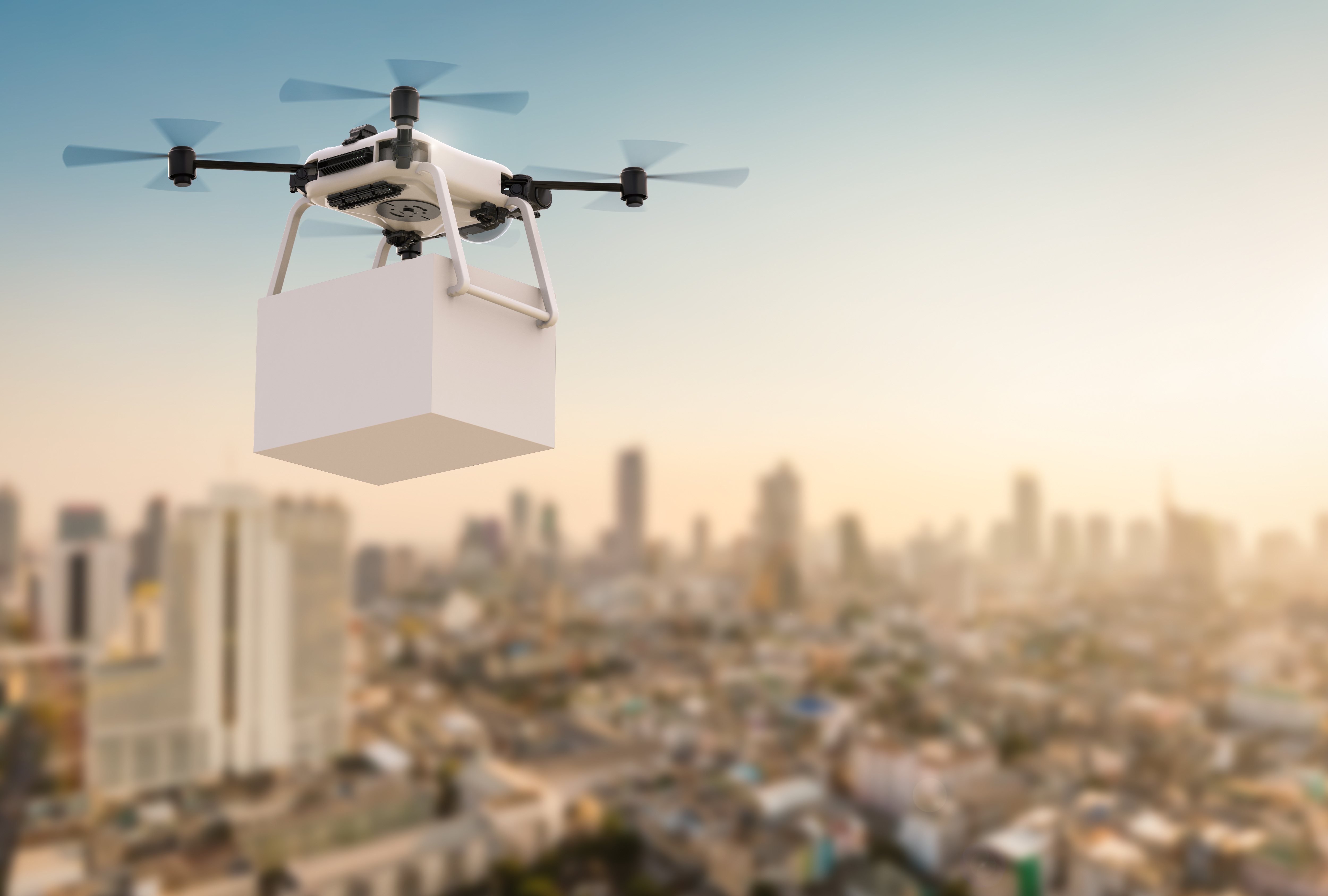Launched in fall 2020, the Extensiv Supply Chain Scholarship aims to foster the talent that will drive the future of our industry. Now in its fourth year, the Extensiv scholarship program hopes to inspire fresh ideas and voices in logistics and supply chains.
For the next installment in our scholarship series, we present William MacKay, one of the Spring 2023 Extensiv Supply Chain Scholarship runners-up, and his essay exploring how drones and small-scale aerial technology will solve supply chain challenges related to last-mile delivery.
Supply chain management has faced numerous problems in the last few years as the world continues to advance. Robotics have streamlined accurate management and even production, but as cities continue to grow and rural communities export more and more raw materials, the demand for efficient supply chain management has grown exponentially. The next big advancement in supply chain management will be the implementation of drones and small-scale aerial technology.
To accurately gauge what the next big advancement would be, the industry's current challenges should first be addressed. According to experts at The University of Tennessee, efficiency is slowed by three main factors: increasing demand for rural goods despite slow growth, freight limits in urban environments, and tightening emission and sustainability requirements. By normal means, these three challenges are quite challenging to address.
Current methods of domestic cargo transportation are typically limited to semi-trucks, trains, and occasionally planes or delivery vans. It is often more costly to send such large vehicles across open stretches for the relatively small scale that many rural regions operate on, rendering continued or expanded operations a poor investment by the current restrictions. As populations grow exponentially in cities, more goods are required to keep businesses and customers satisfied, yet it is not feasible to have an ever-increasing number of semi-trucks and vans in tight urban environments.
Finally, even if infrastructure was expanded in cities and rural regions, regulations around emissions and sustainability are tightening, leading to severe limitations around further semi-truck and large-vehicle cargo transportation. However, there lies a solution to all of these problems that has been developed and emerging in the last few years: drones.
When most consumers and businesses think of drones, they think of four-bladed drones typically seen in recreational environments or the problematic adapted drones employed by Amazon, but this is a poor example. There lie much greater designs than the limited four-bladed models employed currently, such as the revolutionary modern-age drones utilized by Zipline, an organization praised by former NASA engineer Mark Rober for its ingenuity and efficiency (4).
These drones utilize a design more like that of a commercial airplane, with long wings and a sleek design to glide massive distances only on a single battery charge, while simultaneously implementing the multi-rotor design that allows for efficient maneuvering and navigation. How is this going to be the next big advancement?
The answer to this question lies in facing the aforementioned challenges the industry currently faces. Semi-trucks require extensive infrastructure and are expensive to maintain for the relatively small gains offered by slow growing rural communities, but these new-age drones can travel up to 50 miles for less than a few dollars' worth of charge. Semi-trucks are large and cumbersome, relying on transporting as much as possible in one trip, a method that is becoming increasingly difficult in tightly condensed urban environments, but these drones can travel back and forth to anywhere in a large city regardless of traffic or weight requirements, shortening a two-hour delivery through heavy traffic to as quick as 15 minutes. Finally, these electric-based gliding drones produce 97% fewer emissions than industry standard delivery and transportation methods (3).
It’s clear that the solution to all the industry's current challenges lies in drones, but that does not call for the immediate transfer to drones. This advancement will revolutionize the supply chain management industry, not as a replacement but as an adaptation. This new technology can be adapted to fill in the gaps that current methods cannot, reducing the strain on all factors. Not to mention, with their seamless integration into current groundbreaking technologies such as the cloud-based warehouse management systems (WMS) built by Extensiv, fully autonomous networks can be implemented to pioneer the new modern world of supply chain management (2).
The problems of the modern world require modern solutions in all fields, most of all the critical industry that is supply chain management. The next big advancement of this industry lies in low-cost efficient drones to expand operations far beyond their current capabilities.
Works Cited
- “Emerging Technologies in Supply Chain Management - Global Supply Chain Institute: Haslam College of Business.” Global Supply Chain Institute | Haslam College of Business, 17 May 2022, www.supplychainmanagement.utk.edu/blog/emerging-technology-in-supply-chain-management/.
- “Omnichannel Fulfillment Software for 3PLs & Brands.” Extensiv, www.extensiv.com/. Accessed 26 June 2023.
- “Welcome to the Best Delivery Experience Not on Earth.” Zipline Instant Delivery & Logistics, www.flyzipline.com/. Accessed 26 June 2023.
- YouTube, YouTube, https://www.youtube.com/@MarkRober. Accessed 26 June 2023.
-
You’ll read about:
Be the first to know
Subscribe to our newsletter





